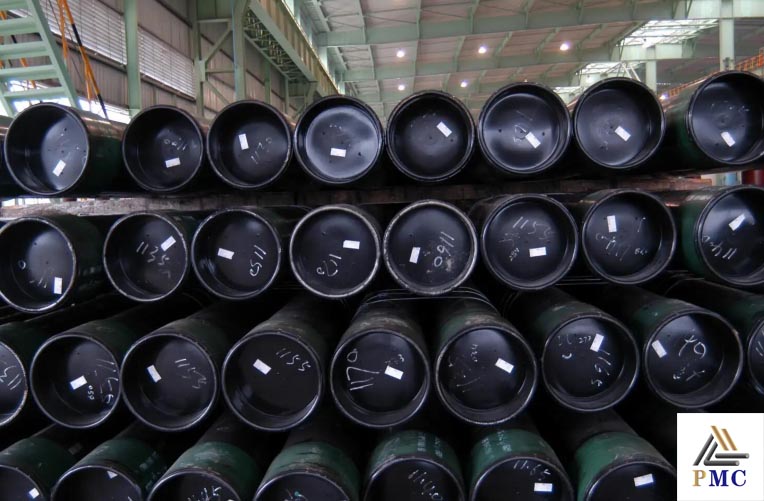
The Three Phases of a Wellbore: Drilling, Casing, Tubing
Production of oil or gas is a complex, time- and cost-intensive undertaking, but in principle, every wellbore goes through three phases: Drilling with drill pipes, lining with casing pipe and production with tubing.
1. Drilling with drill pipes
Drill pipes are durable steel pipes that conduct the force to the drill bit. In many cases the drill pipe turns the drill bit, which cuts into the rock until it reaches the deposits. The last drill pipes before the drill bit are often nonmagnetic drill collars, particularly in horizontal drilling. Drilling with drill pipe is the first phase of every wellbore. Drilling mud meanwhile cools the drill bit and carries the rock cuttings, i.e. the cut rock, back to the surface.
2. Lining with casing
The outer tubes are called casing. Casing lines the wellbore and thus protects the layers of soil and above all the groundwater from being contaminated by the drilling mud and/or frac fluids. It also stabilizes the wellbore, so casing must be able to withstand especially high loads. The drilling and casing alternate – the drill string is taken out at specific intervals and the wellbore is lined with casing and cemented. Then drilling continues.

3. Production with tubing
Tubing transports the oil and gas from deep in the well to the surface – the third phase of the wellbore. Oil and gas occasionally rise to the surface on their own; usually, pumps are needed to bring the fluids to the surface.
Tubing naturally has a smaller diameter than casing, except for the 4 1/2-inch diameter. An outer diameter of 114.3 mm (4 1/2 inches) is considered a threshold and can be either casing or tubing. Anything smaller is called tubing, anything larger is casing.
From the surface to the bottom of the well, the casing telescopes down in size – there are various types of casing depending on their purpose and diameter. The “kickoff point” is where the wellbore gradually transitions from vertical to horizontal. Thanks to horizontal drilling, deposits can be reached in a more targeted way. At the conclusion, the drill string is removed and the production casing is inserted into the wellbore and cemented into place. The well is then fractured and the tubing is installed inside the production casing.
Go here to learn more about " Quality Defects and Prevention of Oil Well Pipe “
Source taken from Viktoria Steiniger


